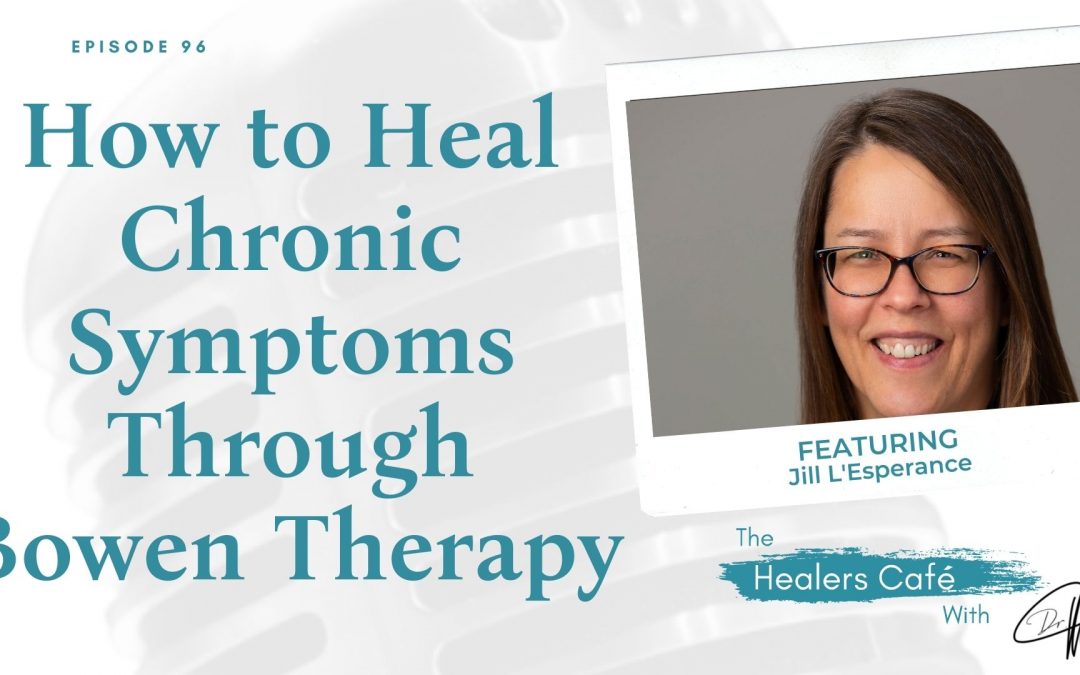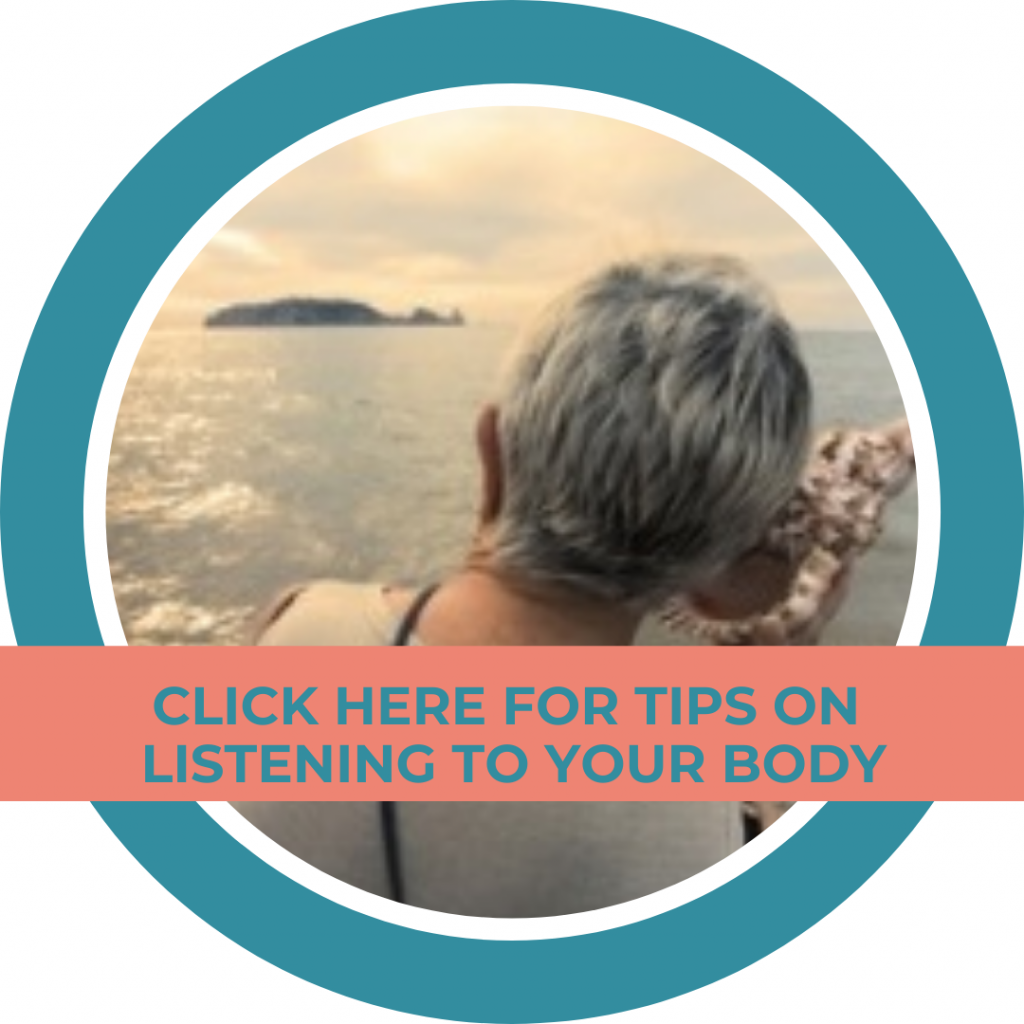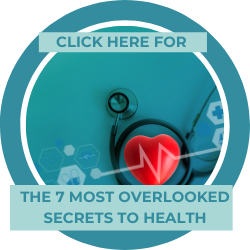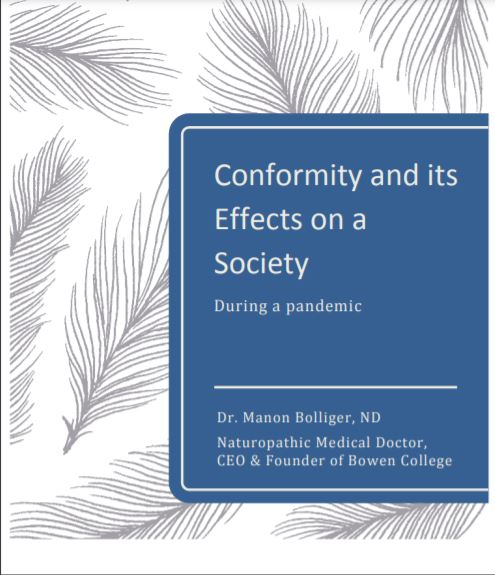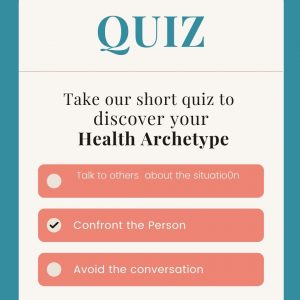How to Heal Chronic Symptoms Through Bowen Therapy with Jill L’Esperance on The Healers Café with Manon Bolliger
In this episode of The Healers Café, Manon Bolliger (Deregistered naturopathic physician with 30 years of experience in health), talks with Jill L’Esperance who practices muscle therapy using Emmett and Bowen techniques and MSTR (McLoughlin Scar Tissue Release)
Highlights from today’s episode include:
Jill L’Esperance
So, my understanding of that is when we can, if we’re just working the muscle itself, and the brain still wants to keep it in protection mode or in fight and flight, it’s going to very quickly go back to fight and flight. So, it would take numerous sessions, it would take long sessions to get a muscle to respond and to relax, then switching over to the methods that are used. Now the light touch approach. If we’re working the correct points, we’re resetting the nerve communication so that the brain can allow the muscle to relax. Right, then it’s a lot more corrective and a lot more long lasting. It doesn’t always hold 100% right off the bat, but we’re helping to retrain that, you know, that muscle memory and the nerve communication from the brain.
Jill L’Esperance
So, I work on finding the actual root cause of the problem, right, so somebody may come in with low back pain, but that doesn’t mean that’s where the problem is. So very quick assessment methods. Very noninvasive, I don’t need to make a client, show me their full range of motion. You know, if they’re, if they have shoulder pain, they don’t have to move their arm for me to assess where the problems coming from and put themselves in pain. Right? So, right, I really like the quick and often visual, if not visual, very light, palpation assessments. And then the quickness of the response.
Jill L’Esperance 20:12
But yeah, you know, the biggest thing…that the biggest, the best explanation I have, again, is we’re working specific points on the body to allow the body to do the healing. Right. So, resetting, that nerve communication, basically just, you know, applying pressure on the points that these founders were able to develop. The guys who developed these techniques, figured out these points that helped to reset that communication. Where these points aren’t what’s doing the healing, but it’s giving the body the ability to correct itself.
ABOUT Jill L’Esperance
I began my practice with national board certification in Medical Massage and Manual Therapy and after practicing this for four years I went on to additional training and became certified in Neuromuscular Release Therapy & and Swing Flex Power Golf, Sports Performance Therapy & SFT.
In 2013 I began my training in NST & Neurostructural Integration Technique. I am now certified in NST Basic, Advanced and TMJ.
Training in October 2015 in Textbook Bowen has taken my treatment approach to a whole new level. By adding assessments and combining treatment methods, with the primary focus on using “Bowen moves” I have seen a number of amazing outcomes and happy clients with great results in a number of unique situations.
Adding The Emmett Technique in 2016 has helped to bring the Bowen method to a whole new level that I never knew existed and has allowed for even quicker results for many clients.
As of March, 2019, I am a Certified Advanced Emmett Practitioner. I am also an instructor of the Emmett Technique Module 1 through 6 classes, and tutor the EMM-Tech Short Course & Easy Muscle Management.
I also practice and teach MSTR & McLoughlin Scar Tissue Release
About Manon Bolliger
As a recently De-Registered board-certified naturopathic physician & in practice since 1992, I’ve seen an average of 150 patients per week and have helped people ranging from rural farmers in Nova Scotia to stressed out CEOs in Toronto to tri-athletes here in Vancouver.
My resolve to educate, empower and engage people to take charge of their own health is evident in my best-selling books: ‘What Patients Don’t Say if Doctors Don’t Ask: The Mindful Patient-Doctor Relationship’ and ‘A Healer in Every Household: Simple Solutions for Stress’. I also teach BowenFirst™ Therapy through Bowen College and hold transformational workshops to achieve these goals.
So, when I share with you that LISTENING to Your body is a game changer in the healing process, I am speaking from expertise and direct experience”.
Mission: A Healer in Every Household!
For more great information to go to her weekly blog: http://bowencollege.com/blog.
For tips on health & healing go to: https://www.drmanonbolliger.com/tips
SOCIAL MEDIA:
– Facebook | Instagram | LinkedIn | YouTube | Twitter | Linktr.ee
About The Healers Café:
Manon’s show is the #1 show for medical practitioners and holistic healers to have heart to heart conversations about their day to day lives.
Follow us on social media! https://www.facebook.com/thehealerscafe
TRANSCRIPT
Welcome to the Healers Cafe. Conversations of health and healing with Manon Bolliger (Deregistered with 30 years of experience in health).
Manon Bolliger 00:03
So welcome to the Healers Cafe. And today I have Jill L’Esperance. That’s my French translation. That’s for us. I think it is. And I’m really excited to be speaking with her today because she does…well, first of all, she started a practice as a…with a national board certification in medical massage and manual therapy and has been working or practicing for many years. Then she did neuromuscular release therapy. And then she was doing Bowen therapy, which also different instructors have developed sort of their own aspects of it from their own experience. So, she has a wealth of experience also with McLaughlin scar tissue release. And so anyway, all good things Bowen generally. And I’m just throwing you’ve been in practice for 18 years, and you’re in the States, correct?
Jill L’Esperance 00:27
That is correct.
Manon Bolliger 00:28
Okay. So well, let’s get well welcome, first of all, and I, my first question is what got you interested in…well, maybe we could start at the beginning with massage and then how did this evolve and what happened?
Jill L’Esperance 01:43
Sure. So, I started in massage, like you said, 18 years ago, and or almost 18 years ago in medical massage, I had whiplash in ’85. And went to a chiropractor who did a lot of working the knots out before he would do the adjustments. So, I just started kind of picking up on that. And I started, I joke and say I was the family not get er outer for many years. And I had a totally different career for that in that part of my life, and started kind of looking into massage schools, but most of them were teaching the spa type massage, which isn’t the avenue I wanted to go. There’s a lot of benefit to that. But that wasn’t the type I was looking for. And so, it kind of got put on hold for quite a few years until I started hearing ads about the school in Michigan that taught medical massage. And I heard their ads, and that sounded like, you know, that was the type of work that sounded like what I wanted to do. So, I went…they were doing an introductory seminar type of thing and I went to that introduction. And by the end of that couple hour introduction, I signed up for the class, and it is literally just it changed my life. I started…so I went through their program was nationally board certified, I started working with people in this was a basically based on working out problems helping people with their issues. So, I had to educate people that this was different than what they were familiar with massage…
Read more...
massage. And then I went…so that was in ’04. And then in ’08, I learned about the deep tissue neuromuscular training. And I went to this guy down in Arizona to take his training, which again, was a very unique form of neuromuscular therapy that most other practitioners weren’t doing. So, I had to educate again, my clients on the benefits of what I did and how it was different than what they were used to. And then transition a few years further down the line. I had a client who asked me if I had ever heard of this one form of Bowen that she had experienced in with her chiropractor in Chicago, when she moved to Minnesota, which I had moved in ’07. When she moved to Minnesota, she was looking for somebody who had the similar training. So, she was telling me about it, and I went and checked it out and started doing research on it and it sounded just amazing. So, I…this variation offered some DVD, some training DVDs, which is how I started and then I tracked down the instructor in Chicago and asked her when she was going to do another training. And then through a couple of classes with this variation. I ran into a lady who was organizing all these other instructors to come to the Chicago area in 2015. So, with that meeting you there, right Dr. Manon, I was introduced to all these different variations like the different interpretations of this Bowen and light touch therapy. So mainly through continuing ed then I was introduced later to Ms. Ross and Matt, who developed the techniques similar again to the Bowen, work, and then MSTR scar tissue work MSTR McLaughlin scar tissue work. So that transition started in 2012. And then in 2015, after I met all you guys, I pretty much stepped away from the deep tissue and the medical massage and have been doing the light touch work ever since. And it’s again, transition my practice in ways that I can’t even believe so.
Manon Bolliger 06:11
Let’s take a step back. Just for people who they may have heard about Bowen or not. First of all, what…how is it different than medical massage?
Jill L’Esperance 06:26
Sure.
Manon Bolliger 06:26
Little…that big differential? And then I’m going to ask you more questions.
Jill L’Esperance 06:31
Yeah. So, the biggest difference is the speed of the treatment, the correctness of the treatment. So, the medical massage, the actual practice itself was very, very similar to what most people are familiar with massage where you’re needing the muscles, basically working specific on the problem muscles, trying to get them to soften. The light touch work, the Bowen and the Emmet work is done with working just specific points, usually two points on a on a muscle that will help the brain allow those muscles to release. Right. So, my understanding of that is when we can, if we’re just working the muscle itself, and the brain still wants to keep it in protection mode or in fight and flight, it’s going to very quickly go back to fight and flight. So, it would take numerous sessions, it would take long sessions to get a muscle to respond and to relax, then switching over to the methods that are used. Now the light touch approach. If we’re working the correct points, we’re resetting the nerve communication so that the brain can allow the muscle to relax. Right, then it’s a lot more corrective and a lot more long lasting. It doesn’t always hold 100% right off the bat, but we’re helping to retrain that, you know, that muscle memory and the nerve communication from the brain.
Manon Bolliger 08:18
Yeah, and, and so I mean, thank you, that’s a good, a good differentiation, because a lot of people have gone to massage therapy for relief. But, you know, again, when I trained therapists as well, I like what you can do that. But if you want to actually deal with getting people out of pain, you should learn, you know, some form of Bowen therapy, right, it’s way more, I think because it works with the nervous system, not just in soothing and relaxing but like you said, it takes you out of fight and flight and it really reeducates the brain. So, the muscles release and then Humpty Dumpty goes back together again.
Jill L’Esperance 09:10
Right. That’s right. Yeah.
Manon Bolliger 09:14
So, you…let let’s talk a little bit about the Emmet technique because you’re actually teaching that therapy. So, what makes it different to you what you know, and I know you haven’t done all of the different ones around town. But what do you love about it?
Jill L’Esperance 09:37
So, what I really love about not just the Emmet technique, even though that’s kind of the direction I’ve specialized in, but the Bowen variations to and from the different instructors is one the overall assessment process. So, I work on finding the actual root cause of the problem, right, so somebody may come in with low back pain, but that doesn’t mean that’s where the problem is. So very quick assessment methods. Very noninvasive, I don’t need to make a client, show me their full range of motion. You know, if they’re, if they have shoulder pain, they don’t have to move their arm for me to assess where the problems coming from and put themselves in pain. Right? So, right, I really like the quick and often visual, if not visual, very light, palpation assessments. And then the quickness of the response. For most of the moves most of the treatment methods, people can usually…clients usually feel response very quickly with the different moves. Those have been the two main things like I say, I used to spend, you know, 60 to 90 minutes, maybe working on neck and shoulders, and that’s all the further I got. And now I feel like I’m doing with it, you know, most of my treatments run about 30 minutes for the actual treatment time. And I can get the response on the, you know, neck and shoulder area within a couple of minutes. You know, it might take a little longer in some, in some cases, but the speed and it’s a lot easier on me, I’m not doing the hard pressure with my hands or my elbows or, you know, it’s just it’s very easy on me, it’s not painful to the client. There’s just so many things that have really let my practice evolve…and, you know,
Manon Bolliger 11:59
Yeah, it’s a true win win, right?
Jill L’Esperance 12:01
Oh, for sure. It is for sure it is.
Manon Bolliger 12:04
Yeah, it’s quite remarkable, really, you know, from, like, in my training, I, as a naturopathic doctor, or I should say, ex naturopathic doctor, currently, anyway, it’s actually amazing, we have all these tools, and everything can be useful. But, you know, I always say I do Bowen first, because it just allows the body to reset. And man, it’s like, the body wants to heal. And it’s like, this methodology has tapped into that in a way that I have. I’ve actually not seen a therapy, physical tap into it as quickly holistically. Right. Like, I think that’s really it. I just, it’s just speaks to the body. I you know, and the patient knows that. It’s like, you can’t, it’s not like, do you see a change? Or is like, no, it’s like, Oh, my God.
Jill L’Esperance 13:09
Right. Oh, I agree with you 100% on that, you know, clients are shocked and amazed, like he’s given you anything.
Manon Bolliger 13:20
Give us some stories without names, obviously. But some stories that I mean, either common ones if you want, or the ones that really…yeah, surprised you because I find that I you know, in practice, it’s like, it is surprised all the time. Yes, like, wow. And the body can do that.
Jill L’Esperance 13:44
Right. Oh, you know, the, I will say be having been doing this type of therapy specific for at least six years now. I mean, I have seen life changing results, literally on a regular basis. You know, a couple of great stories. I had one lady who had come in. This was a few years ago. So I was, you know, just still going through some of the training for the Emmet technique. And so, we had done quite a bit of work with her. She had been in a car accident quite a few years ago, had a shattered hip and pelvic floor that, you know, obviously it had hip replacement from that chatter. So, we had done some scar work on her. We’ve done numerous Muscle Therapy sessions to light touch work. And we’re seeing really good results. The pain levels were down significantly, but she still had a very significant limp. So, I just come back from one of the training sessions, the weekend. I had done that the weekend before her appointment, and I said you know, okay, I just learned a new move. I think this might be great for your situation. Do you mind if I if I try this on you? And she says, yeah, well, you know, the sessions we’ve been doing have been really helpful. And my daughter’s getting married this weekend. So, I’d rather just do what we’ve been doing. And I said, okay, I’ll make you a deal. Let me try this move. And if it doesn’t work, we’ll just do your normal session that we’ve been doing. So, I did this new move on her. It was first spinal alignment, and just a couple moves on a couple points with her standing. And then I said, okay, now I want you to go take a couple steps for me. And I just again, she had a very significant limp. And by her third step, her walk totally changed. And I said, oh, my, you know, I have never seen you walk like that. And she says, I have not walked like this since April 19, 1982.
Manon Bolliger 16:04
Oh, my gosh.
Jill L’Esperance 16:05
So, that, you know, whatever had gone on with her, you know, the injury with the hip and the surgeries and everything else, we were able to get her nervous system back on track, to let all that trauma go. And she still she’s like, now how many years? Three years later, she’s like, I feel like I can be normal again.
Manon Bolliger 16:34
So huge.
Jill L’Esperance 16:36
Yeah, I mean, after 30, some years of walking with a limp. I just and I just had another lady just recently, hers wasn’t as long term, but she had broken her ankle. And with her it was I started with the scar tissue work, and then did a few of the Emmet moves to get the leg back on track after we did opened up the scar tissue work. And she went from she said, a limp where people would stop and ask her what was what was wrong. And this has been going on for about three years, to now walking as if nothing had ever happened.
Commercial Break 17:21
Hi, I’m Dr. Manon Bolliger. And I wanted to take a moment to thank you for watching these podcasts. If you haven’t subscribed, please do. Also, feel free to leave comments and like it. This way more people get to find out about this work and about other choices for health. So, I think it’s really important that we all share this information, I have a free gift to you. It’s a seven sequence email that has tips for every day, and a little insight about how to live your life when it comes to health. And it’s very much built on how I managed to overcome stage four cancer and what it took. So, I would love you to have this. And thank you once again, for listening to these podcasts.
Jill L’Esperance 18:24
You know, so those are a couple, a couple of big ones. I mean, I’ve had numerous, you know, just restricted shoulder some for 12 to 15 years that then they get full range of motion after a few moves very quickly. And, you know, has held up I’ve had one client from had a restricted shoulder from a snowmobile accident in the 70s. And, you know, she came in for her couple sessions and was shocked at the at the results and said you’ve done something that nobody else has been able to figure out. And, you know, and of course, I’m like, all I’m doing is the moves I was trained to do. You know, I don’t I don’t, you know, I don’t know, it shocks me as well as them just like you said, it’s pretty amazing how it how it works.
Manon Bolliger 19:21
It taps into…because, I mean, there’s lots of explanations, you know, and with assessment, you have more clues to an extent, right. But the incredible capacity of the body is still beyond all of that, you know?
Jill L’Esperance 19:39
Oh, yes.
Manon Bolliger 19:41
Yeah. So, what I’m thinking of the first example you gave the woman with the hip restriction. How do you explain that to a person like I’m thinking there’s probably listeners going I have a hip thing going on and then hasn’t moved or whatever. I don’t know where they’re from but, how would you? Or how did you explain it to her?
Jill L’Esperance 20:10
You know…
Manon Bolliger 20:11
If you can remember it.
Jill L’Esperance 20:12
But yeah, you know, the biggest thing…that the biggest, the best explanation I have, again, is we’re working specific points on the body to allow the body to do the healing. Right. So, resetting, that nerve communication, basically just, you know, applying pressure on the points that these founders were able to develop. The guys who developed these techniques, figured out these points that helped to reset that communication. Where these points aren’t what’s doing the healing, but it’s giving the body the ability to correct itself. So, I, you know, I guess that would be my best.
Manon Bolliger 21:07
Yeah. So, it’s again, back to the holistic component, right? Yeah. You know, I, oh, I released this muscle, because, you know, when I palpated it, it was tight. It’s like, not really, right, like, when you’re looking at it very mechanically, that could be the end result of a problem with your jaw.
Jill L’Esperance 21:34
Right.
Manon Bolliger 21:35
Like, you know, it could go anywhere. Where, you know, the way the fascia falls the way that compensations in the body, there’s so much going on. Right?
Jill L’Esperance 21:45
Right.
Manon Bolliger 21:46
That we tend to think well, or maybe this is how I’ve experienced massage, right? Even medical massage, it’s like, we’re gonna find the solution in the areas that are acting up. Right? Is it the model is more like an allopathic model of dealing with, like, I do, you know, in Bowen, and I do say, what does the patient saying there? They’re always right. That’s the other truth. But it doesn’t mean that that is the first place necessarily, you start.
Jill L’Esperance 22:26
Right. Exactly.
Manon Bolliger 22:29
They hold the clue 100%. Otherwise, it would be harder if they didn’t communicate what they’re experiencing.
Jill L’Esperance 22:35
Right. Right. Right.
Manon Bolliger 22:37
But it’s not so much undoing an area or rubbing it away, or just bringing circulation per se. Like there’s more right here, right? That’s…
Jill L’Esperance 22:51
Yeah, yeah. So, what I, the way I explained it to clients is getting the body back into full balance. Right, so maybe not just structurally and muscularly. But like you said, it’s all it’s the whole holistic approach, right. So, it may be dietary, it may be nutritionally, it may be emotional, it may be, you know, other levels that all have to work together. And then that’s where we look at, you know, I’ve done what I can maybe now it’s time to look, you know, for another practitioner or another therapist who can help with the other aspects, right.
Manon Bolliger 23:37
Yeah, if it doesn’t resolve, yeah, no, I mean, I think it’s really important to know, you know, when to refer and what is right within the scope, and, and all of that, but I do find that, you know, even with nutrition, for example, I have seen when you do go in, and a person’s I really can’t absorb the food or I have issues and then we do work, you know, on the diaphragm, and we, you know, and the whole body, right, not just that. It changes that, you know, so it’s, it again, it’s not looking at it piecemeal, it’s rewriting at it that the body can sorted out and what’s left, that that it doesn’t figure out, that’s where we go, okay, what would be helpful, you know, right.
Jill L’Esperance 24:30
Right.
Manon Bolliger 24:31
And of how I’ve come to understand this work, you know, so,
Jill L’Esperance 24:36
Yeah, I agree with you on that, you know, and just to share a kind of a funny story. I, my sister, she lives, you know, 700 miles away, but she’s a runner, and he had called me at one point to see if there was anything I could do for plantar fasciitis. So, I told her a few stretches that I was familiar with, and then the next time I was in town with her, I did a treatment on her. But I didn’t do a whole lot for her feet. I did more on her neck and jaw. And then the next day, she texts me and she’s like, I don’t know what the heck you did, but my plantar fasciitis is gone. So, you know, just, you know, again, it’s not always where we think it’s gonna be, you know, um, you know, and I probably did some, like, a couple moves on a full body type of a treatment over her calves and feet, but I didn’t spend time there. And then, you know, the problem resolved itself by correcting other areas. So, and I’ve, you know, stuff like, that has happened numerous times. And that’s where…
Manon Bolliger 25:56
Fixing the weak link, right, that’s rather than the symptomatic expression part. It’s, what’s the weak link, and you can relate it with many different…there’s different theoretical understandings of how their link, right, so we can fall back to Chinese medicine, you can fall back to all kinds of theories that explain this. But that’s basically what it is if the body is functioning at full capacity, it fixes at full capacity.
Jill L’Esperance 26:38
Right. Yeah, it’s, it’s amazing. It still amazes me on a regular basis.
Manon Bolliger 26:47
Yeah, I know for sure, for sure. What else do I want to know about your practice? Or your…what else is going on for and how has this whole time period been for you with this world situation?
Jill L’Esperance 27:05
Yeah, you know, that part, of course, 2020 There were some bumps in the road. But 2021 has really been an amazing year. You know, in my client, my ba…my business client base has been all word of mouth. I mean, I’ve done especially in the last three years, very little to no advertising. So, the word of mouth just has gone crazy. 2021 has been my best year, like ever, client numbers, you know, across the board, new client referrals, yeah, all of that. But this I will say the scar tissue work has added a big new addition to that. That we’ve also found can be caught in sometimes even the smallest scar, you know, half inch long scar or very faint scar can be creating problems that we don’t even realize because yeah, like we were saying with the muscle stuff in different areas, it can be pulling on fascia, it can be pulling on nerves. I’ve, you know, I’ve seen it, like where nerves are reactivated after opening, you know, I shouldn’t say opening but releasing the adhesions on the scar. So those two combined have been huge across the board for my practice so…
Manon Bolliger 28:43
And do you think that also because I don’t know how bad it was in which areas in you know, in the States, so I am not sure exactly the details there. But I know that in Canada, people have been starved for touch because we’ve had so many lock downs and so much isolation in different areas, some provinces worse than others for no apparent reason. But that I’ve been now at teaching a like even families how to do the basic work just to get people out of fight and flight out of this panic freezing fear state that, you know, we’ve been living under, right. Which is hard to get away even if you can do your independent research on non-state media and there’s plenty of places to get information. But it’s continual, and it just triggers people who have you know, so much trauma and if you have pain, if it actually increases your pain to be in that, you know, oh, intensified fear state. So, I think, I don’t know, I was wondering if that also was a factor in people just wanting the old release?
Jill L’Esperance 30:13
You know, it’s very possible it, it’s so hard to, you know, to identify if there’s, you know, there’s so many variables to, in our area, the restrictions even in the hospital and doctors’ offices where, you know, people are looking for other methods. You know, and we’re seeing more and more people in the area where I’m at trying to get away from you know, just being on the meds being on the muscle relaxers long term commitments with some of the other modalities, they’re looking to find methods that actually correct the problem. And I think, you know, and that’s the education, I want to start getting out there that there really are methods that can correct the problem and that it doesn’t have to be a like…people think some of these things like plantar fasciitis, once you have it, you have it for life, low back pain, once you have it, you have it for life. And those, that’s the education I would love to get out to people is that you don’t have to live with it for life. You know, I have a quick story. 83 year old ex farmer, who’s out doing things he told me the other day, he was climbing the ladder to hang Christmas lights. And he said he’s doing stuff now he hasn’t done in years, at 83 years old. So those are the that’s the education, I’d love to get out to, you know, to the general public.
Manon Bolliger 31:55
Yeah, and I think this is the time for this to really explode in a big way. Because I think, you know, people are starting to see that maybe what we’ve considered to be the medical model has its limitations. And, you know, and even though there’s a big push on the idea that our immune systems are somehow not sufficient. You know, I think people are starting to see through that. And at least I hear they are I can see that, you know, it’s like, oh, I’m willing to go and you know…Canadians are very, very polite, and they’re very acquiescent. So, they’ll say, Sure, just two doses, but go three, four, and then the eight they’ve got scheduled. I don’t think so. They are waking up, you know, I’m saying wait a second here. We, we have an immune system, you know, and we can heal. And I think all of this is, is really gonna…and I think that’s the big fear, it’s gonna explode all the therapies that actually work at the root cause and actually heal and give people back their power. Really, you know.
Jill L’Esperance 33:17
Oh, yeah. And the more I learned about what the body can do for itself, the more amazing it gets, you know, it’s, it’s, yeah. That’s crazy. It’s crazy what the body can do for itself.
Manon Bolliger 33:32
Well Jill, our time is up, but I always I love inspiring people with hope that not hope that is useless hope that really has solutions, you know? I really appreciate you being here. And one last word from you or a sentence. How do you want to end?
Jill L’Esperance 33:51
Well, I will say, you know, thanks for having me on. And again, there are methods out there that can help your body heal itself. You know, again, life changing results in ways that you’re you may not be familiar with, but they’re worth exploring.
Manon Bolliger 34:10
Thanks very much.
Jill L’Esperance 34:11
Thank you.
Manon Bolliger (Deregistered with 30 years of experience in health)
Thank you for joining us. For more information, go to DrManonBolliger.com.
* De-Registered, revoked & retired ND, after 30 years of practice in healthcare. Now resourceful & resolved to share with you all the tools to take care of your health & vitality!
